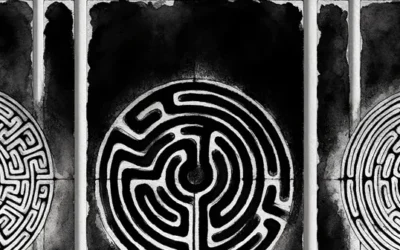How Present-Moment Awareness Can Transform Your Life

Mindfulness, the practice of bringing non-judgmental awareness to the present moment, has emerged as a powerful tool for promoting mental health and well-being. Psychologists, therapists, and counselors are increasingly incorporating mindfulness-based interventions into their work with clients struggling with issues like anxiety, depression, trauma, ADHD, eating disorders, and more.
The Benefits of Mindfulness
Research has shown that regular mindfulness practice can:
- Reduce stress, anxiety, and depression symptoms
- Improve emotion regulation and impulse control
- Enhance focus, concentration, and memory
- Increase self-awareness and self-compassion
- Promote healthier relationships and communication
- Support overall physical health and immune function
By cultivating present-moment awareness, individuals can develop a greater sense of peace, resilience, and well-being.
Mindfulness-Based Therapeutic Approaches
Several evidence-based therapeutic modalities incorporate mindfulness principles:
- Mindfulness-Based Stress Reduction (MBSR): Teaches mindfulness through meditation, body scans, and gentle yoga.
- Mindfulness-Based Cognitive Therapy (MBCT): Combines mindfulness with cognitive therapy to prevent depression relapse.
- Dialectical Behavior Therapy (DBT): Includes mindfulness skills training to support emotion regulation and distress tolerance.
- Acceptance and Commitment Therapy (ACT): Uses mindfulness to help clients contact the present moment and take values-based action.
Therapists may also incorporate mindfulness practices into individual, couples, and family therapy sessions to promote emotional awareness, communication, and connection.
Mindfulness in Daily Life
Mindfulness isn’t just for the therapy room – it’s a skill that can be cultivated in daily life to support mental health and well-being. Some simple ways to practice mindfulness include:
- Mindful breathing: Taking slow, deep breaths and observing the sensations of the breath.
- Body scans: Systematically bringing attention to each part of the body, noticing sensations without judgment.
- Mindful movement: Engaging in gentle yoga, tai chi, or walking with full attention to the body’s movements.
- Mindful eating: Paying attention to the sights, smells, textures, and tastes of food while eating slowly and without distraction.
- Gratitude practice: Regularly noting things you’re grateful for, no matter how small.
By integrating mindfulness into daily routines, individuals can develop a greater sense of presence, self-awareness, and equanimity.
Start Your Mindfulness Journey
If you’re interested in exploring how mindfulness can support your mental health and well-being, consider working with a therapist trained in mindfulness-based interventions. With regular practice, mindfulness can transform your relationship with stress, emotions, and the challenges of daily life. Start your mindfulness journey today.
Modern Therapies for Trauma: Mindfulness, Somatic Approaches, and Beyond
In recent years, there has been a growing recognition of the importance of mindfulness and somatic approaches in treating trauma. These therapies go beyond traditional talk therapy to address the deep-rooted, often unconscious impacts of trauma on the mind and body. By integrating mindfulness, somatic awareness, and other holistic techniques, these approaches can help individuals process traumatic experiences, regulate their nervous systems, and build resilience.
EMDR (Eye Movement Desensitization and Reprocessing)
EMDR is a powerful trauma therapy that uses bilateral stimulation (usually eye movements) to help the brain process and integrate traumatic memories. During EMDR, the client focuses on a traumatic memory while simultaneously engaging in eye movements or other bilateral stimulation, which seems to facilitate the brain’s natural healing processes. Over time, the traumatic memory becomes less distressing and more adaptive, leading to a reduction in PTSD symptoms and an increased sense of empowerment.
Brainspotting
Brainspotting is a more recent development in trauma therapy that combines focused mindfulness with specific eye positions to target and release trauma held in the deeper regions of the brain. During a brainspotting session, the therapist guides the client to focus on a traumatic memory or body sensation while holding their eyes in a specific position. This seems to bypass the conscious mind and directly access the subcortical regions where trauma is stored, allowing for deep healing and release.
Emotional Transformation Therapy (ETT)
ETT is a mind-body approach that combines mindfulness, breathwork, and tapping on specific acupressure points to help clients process and transform difficult emotions related to trauma. By bringing mindful awareness to the body and using tapping to regulate the nervous system, ETT can help clients release traumatic stress, build emotional resilience, and cultivate a greater sense of self-compassion and inner peace.
Dialectical Behavior Therapy (DBT)
DBT, originally developed for individuals with borderline personality disorder, has been increasingly applied to treating trauma and PTSD. DBT emphasizes mindfulness skills to help clients regulate intense emotions, tolerate distress, and navigate interpersonal relationships more effectively. Through a combination of individual therapy, group skills training, and phone coaching, DBT can help trauma survivors build the coping skills needed to create a life worth living.
Parts-Based and Somatic Approaches
Parts-based therapies like Internal Family Systems (IFS) and Sensorimotor Psychotherapy recognize that the psyche is made up of different “parts” or subpersonalities, each with its own unique perspective, emotions, and coping strategies. In the context of trauma, certain parts may carry the burden of traumatic memories or engage in protective behaviors that are no longer adaptive. By bringing mindful, compassionate awareness to these parts and facilitating inner dialogue and integration, parts-based therapies can help trauma survivors heal from the inside out.
Somatic approaches like Somatic Experiencing and Sensorimotor Psychotherapy focus on the body’s role in trauma and healing. By gently guiding clients to notice and track physical sensations, release chronic muscle tension, and engage in mindful movement, these therapies can help regulate the nervous system, process traumatic activation, and restore a sense of safety and embodiment.
The Future of Trauma Treatment
As our understanding of trauma and its impacts continues to evolve, so too do the therapeutic approaches available to support healing. By integrating mindfulness, somatic awareness, and other holistic techniques, modern trauma therapies offer a pathway to deep, transformative healing. If you are a therapist working with trauma survivors, consider incorporating these approaches into your practice. And if you are an individual struggling with the aftermath of trauma, know that there are powerful, evidence-based therapies available to support you on your healing journey. Reach out to a trauma-informed therapist today to begin your path to greater peace, resilience, and wholeness.






















0 Comments